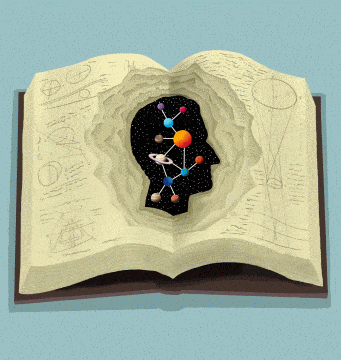Sam Knight in The New Yorker:
 In October, 2010, an Italian religious historian named Alberto Melloni stood over a small cherrywood box in the reading room of the Laurentian Library, in Florence. The box was old and slightly scuffed, and inked in places with words in Latin. It had been stored for several centuries inside one of the library’s distinctive sloping reading desks, which were designed by Michelangelo. Melloni slid the lid off the box. Inside was a yellow silk scarf, and wrapped in the scarf was a thirteenth-century Bible, no larger than the palm of his hand, which was falling to pieces. The Bible was “a very poor one,” Melloni told me recently. “Very dark. Very nothing.” But it had a singular history. In 1685, a Jesuit priest who had travelled to China gave the Bible to the Medici family, suggesting that it had belonged to Marco Polo, the medieval explorer who reached the court of Kublai Khan around 1275. Although the story was unlikely, the book had almost certainly been carried by an early missionary to China and spent several centuries there, being handled by scholars and mandarins—making it a remarkable object in the history of Christianity in Asia.
In October, 2010, an Italian religious historian named Alberto Melloni stood over a small cherrywood box in the reading room of the Laurentian Library, in Florence. The box was old and slightly scuffed, and inked in places with words in Latin. It had been stored for several centuries inside one of the library’s distinctive sloping reading desks, which were designed by Michelangelo. Melloni slid the lid off the box. Inside was a yellow silk scarf, and wrapped in the scarf was a thirteenth-century Bible, no larger than the palm of his hand, which was falling to pieces. The Bible was “a very poor one,” Melloni told me recently. “Very dark. Very nothing.” But it had a singular history. In 1685, a Jesuit priest who had travelled to China gave the Bible to the Medici family, suggesting that it had belonged to Marco Polo, the medieval explorer who reached the court of Kublai Khan around 1275. Although the story was unlikely, the book had almost certainly been carried by an early missionary to China and spent several centuries there, being handled by scholars and mandarins—making it a remarkable object in the history of Christianity in Asia.
Melloni is the director of the John XXIII Foundation for Religious Sciences, an institute in Bologna dedicated to the history of the Church. He had heard of the Marco Polo Bible, but he was unaware of its poor condition until a colleague spotted the crumbling book at an exhibition at the library, in 2008, and pitched a project to restore it and find out more about its past. “It was like a sort of Cinderella among the beautiful sisters,” Melloni said. Like other people accustomed to handling old texts or precious historical objects, Melloni has a special regard for what Walter Benjamin called their aura: “a strange weave of space and time” that allows for an intimation of the world in which they were made. “You have in your hand the manuscript,” Melloni said. “But also the stories that the manuscript is carrying.”
The restoration took eighteen months. Ten thousand pieces of the Bible were reassembled. In the process, Melloni was determined to subject the document to the latest scientific analysis. “We should do on this Bible the type of thing that would be done on the ‘Mona Lisa,’ ” Melloni told his colleagues. He contacted the cultural-heritage center at the Polytechnic University of Milan, the largest scientific school in Italy, to ask advice. In addition to standard conservation tools, like ultraviolet photography and infrared spectroscopy, which is used to study pigments, the experts there suggested proteomics. “It was the first time I heard the word ‘proteomic’ in my life,” Melloni recalled.
Proteomics is the study of the interaction of proteins in living things.
More here.
